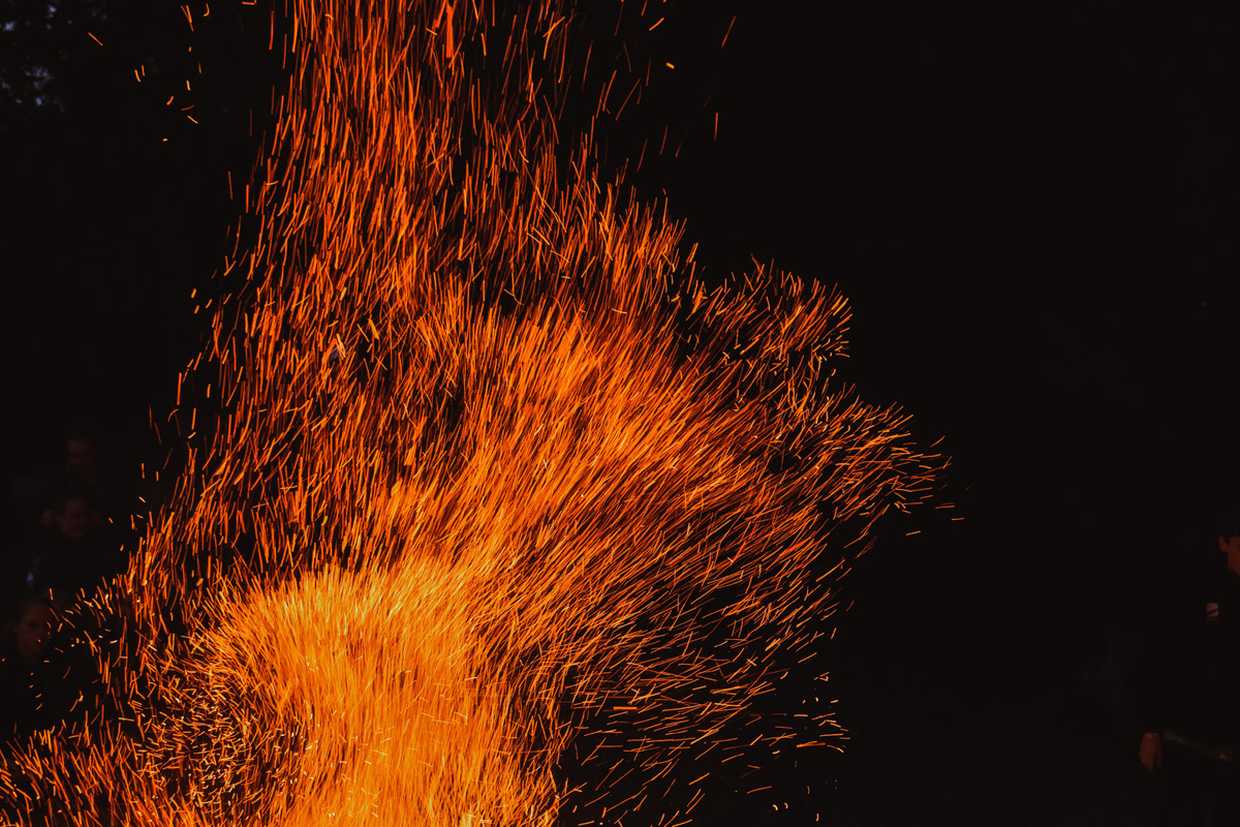The Gunpowder Plot

Remember, remember, the fifth of November…
Every year on the 5th of November, the skies above the UK are lit up with fireworks and across the country, communities build big bonfires, and sometimes put a figure of a person on top of them and then burn them. The British have done this every year since 1606, but why?
The evening remembers a plot to blow up the Houses of Parliament, an event that – if it had been successful – would have been the country’s biggest terrorist incident. It would have killed the Royal Family, Members of Parliament, the senior judges of the English legal system, most of the Protestant nobility and senior church leaders, paralysing the country.
So what exactly happened?
In 1603, Queen Elizabeth the First died. She had never married and so the throne passed to her cousin’s son, King James of Scotland. King James became the first monarch to rule over England and Scotland. Like Elizabeth, James was a Protestant.
And now a quick lesson in religious history. In the first half of the 16th century, there was a growing anger towards the Roman Catholic Church. It was seen as a rich and greedy institution, exploiting poor people. The Protestant religion (from the word ‘protest’) began to take hold across northern Europe. In England, Elizabeth’s father, Henry the Eighth (famous for his six wives) changed the religion of England to Protestant so he could marry his second wife.
Henry’s son, Edward, made England even more Protestant. It became illegal to worship as a Catholic and the Catholic faith became secret. Many Catholics were forced to hide their religion. By the time of Elizabeth the First’s death (Elizabeth was Edward’s sister), Catholics were regularly beaten up or had their property stolen.
When James became King, he swore that he would be kind to Catholics and the Catholics began to hope that life would be better under James. Even though James was a Protestant, his mother, Mary, had been a Catholic.
However, James was a paranoid man who was deeply distrustful of Catholics. When he discovered a Catholic rosary in his wife’s possessions, he was convinced that Catholics were trying to assassinate him. After all, other monarchs had been in danger before; the French King, Henry III was assassinated in 1589 by a Catholic priest, there were several attempts on Queen Elizabeth’s life during her reign and the Pope had decreed that anyone who killed a Protestant monarch was guaranteed a place in heaven.
James began to make new laws against Catholics and their lives became harder. Some Catholics began to hate King James and some of them began to think the only way their lives would change would be if the King were dead.
One such man was Robert Catesby, and in 1604 he began to gather a group of men together to kill the King. Their plan was to explode a massive amount of gunpowder under parliament when the next opening of parliament took place. One of the men he recruited was called Guy Fawkes and it was Guy’s job to look after the gunpowder that was being secretly stored under parliament.
The day before the planned attack, a member of the royal court received an anonymous letter, advising him not to attend parliament that day. Suspicious, James ordered a search of the parliament building and on the evening of November 5th, Guy Fawkes was caught with the gunpowder.
Tortured on the rack, Guy confessed everything and the other plotters were quickly caught. There was considerable shock at how close the plotters had come to succeeding and a wave of love for the Royal Family ensured that Britain remained a Protestant country. It was so Protestant that anti-Catholic laws were not relaxed until the end of the 19th century.
A recent TV show recreated the conditions of 1605. They discovered that the amount of gunpowder the plotters had gathered would have killed anyone who was within 100 meters of Parliament. They discovered that the 2.1 meter thick walls of parliament would have been completely destroyed. The explosion would have been heard from miles away and the windows in buildings within a radius of a mile and a half would all have been shattered.
The Observance of 5th November Act was introduced in 1606 which decreed that every 5th of November bonfires should be lit (to represent the fire that would have engulfed parliament) and fireworks let off (to represent the explosive power of the gunpowder), a tradition that continues to this day.
Guy Fawkes lives on too. After the plot was discovered, the word ‘guy’ was originally used to refer to anyone who looked suspicious or strange. Of course, today we use the word ‘guy’ to talk about anyone and Mr Fawkes is the reason we do so.
These days, a ‘guy’ (a figure of a person made by people) is sometimes put on top of the bonfire to be burnt. They usually have the faces of politicians or people who are seen as ‘bad’. (I suspect there will be a lot of Donald Trumps burning on bonfires across the country this 5th November!).
So, if you’re in the UK around November 5th, be sure to go to watch an organised fireworks display – there will be lots of them to visit and don’t be too shocked to see British people enjoying watching the guy being burnt on top of the flames.
I leave you with a rhyme British children are taught at school:
Remember, remember, the fifth of November,
Gunpowder, treason and plot!
I see no reason why gunpowder treason
Should ever be forgot.
We also have an intermediate-level blog post about Bonfire Night
Post your questions and comments:
Why study at The London School of English?
- Rated “Excellent” in over 450 independent client reviews
Over 100 years’ experience
Tailored training delivers clear results
Memorable experiences in London, Canterbury or online










